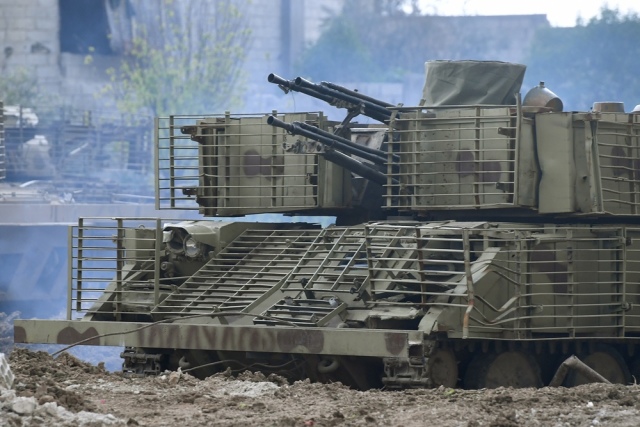
Image source: Photo: IvanSidorenko1
Adopted in the first half of the 60s, the Soviet anti-aircraft self-propelled gun ZSU-23-4 "Shilka" (2A6) was at various times in service with four dozen countries of the world. According to the project "RG: Russian weapons", currently it continues to be used in the armies of more than twenty countries.
The combat vehicles are armed with a quadruple 23-mm AZP-23 Amur cannon, which has a maximum firing range of 2000 meters. The rate of fire is up to 1000 rounds per minute per barrel. The engine power is 280 hp. The maximum speed on the highway is 50 km/h. The power reserve over rough terrain is 300 km .
The thickness of the armor in the frontal part of the hull is up to 15 mm. Combat weight - 19,000 kg. The crew is four people.
They were involved in more than two dozen armed conflicts, starting with the so-called "War of Attrition" in the Suez Canal zone in 1969-70. They fought in Vietnam, in the Middle East, including in October 1973 and in the summer of 1982. Interestingly, the captured "Shilka" served the Israeli military for a long time.
They were also part of the armed forces of Iran and Iraq, which had been fighting each other for eight long years. It was in this confrontation that such equipment was actively used not only to repel attacks from the air, but also to disrupt infantry attacks.
A limited contingent of Soviet troops in Afghanistan actively used the ZSU-23-4. They protected the airspace, were included in the transport columns, were on duty at checkpoints and went on combat operations.
According to the received combat experience, a modification specially adapted to the local conditions was created, which had twice the ammunition capacity - up to four thousand shells. Radio-electronic equipment was dismantled from it and a new night sight was installed.
Syria became another hot spot where the "Shilki" turned into fire support vehicles. In 2011, rebels supported by foreign centers tried to seize power in the country.
The anti-aircraft self-propelled guns that were part of the government troops began to be actively used in the fight against terrorists. For effective actions in the dark, thermal imaging sights were installed, including those developed by Syrian specialists and called Viper ("Viper"). They detect targets at a distance of up to four kilometers.
Some of the cars received hinged containers with filler, anti-cumulative lattice screens with chains. To strengthen the firepower, guides for launching unguided rockets were mounted.
Other samples belonging to the Republican Guard were equipped with solid plates located at angles, which created the effect of multilayer booking.
Similarly upgraded "Shilki" demonstrated an increased level of protection compared to conventional machines. As a result, the Syrian troops have achieved a significant reduction in losses.
